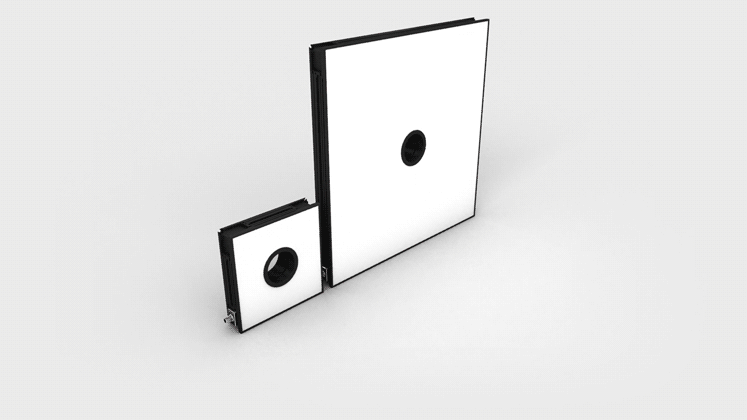Illumination Method Using Flat Dome Lights
Flat dome lights are most commonly used in this illumination method.

Brightfield
By using flat dome lights as a direct illumination, it is possible to homogeneously illuminate large areas with various types of surfaces and materials. Since the surface of the light is like a backlight, there are no LED hotspots appearing on the illuminated field.
LFD Flat Dome Lights

Flat dome lights for Machine Vision applications are available in three different light sources: white light, red light and infrared light. These direct top lights create a homogeneous and diffuse illumination area in several different sizes.
Thanks to the uniform light emission from the flat diffuse LED light, it is possible to improve contrast on objects of various surfaces and materials. This solution is perfect for area lighting in robotic applications such as pick and place or logistics applications requiring stable images on large fields of view. The robust aluminum enclosure has 4 mm borders around the lighting area and mounting points around the perimeter, making it easy to integrate.
Thanks to the uniform light emission from the flat diffuse LED light, it is possible to improve contrast on objects of various surfaces and materials. This solution is perfect for area lighting in robotic applications such as pick and place or logistics applications requiring stable images on large fields of view. The robust aluminum enclosure has 4 mm borders around the lighting area and mounting points around the perimeter, making it easy to integrate.
Illuminated Features
Some cameras come with embedded LED illumination. The effect of their light output is similar to a ring light. This can often result in a significant hotspot in the center of the field of view, when surfaces are not perfectly matte. The flat dome LED panel illuminator provides intense and uniform light emission around the camera optics, which results in a homogeneous illumination across a variety of materials – from shiny to matte.

Camera with embedded illumination

Camera with LFD flat dome light
Size Selection

The light output is reflected to the tangent of the inspected part’s surface. Due to this reflection, it is necessary to consider how the light reaches the camera to create contrast.
General Guideline
When illuminating flat surfaces, the required size of the flat dome light (1) is twice the size of the field of view (2). This is due to the camera’s perspective (see also: Parallax Effect).
When illuminating flat surfaces, the required size of the flat dome light (1) is twice the size of the field of view (2). This is due to the camera’s perspective (see also: Parallax Effect).








